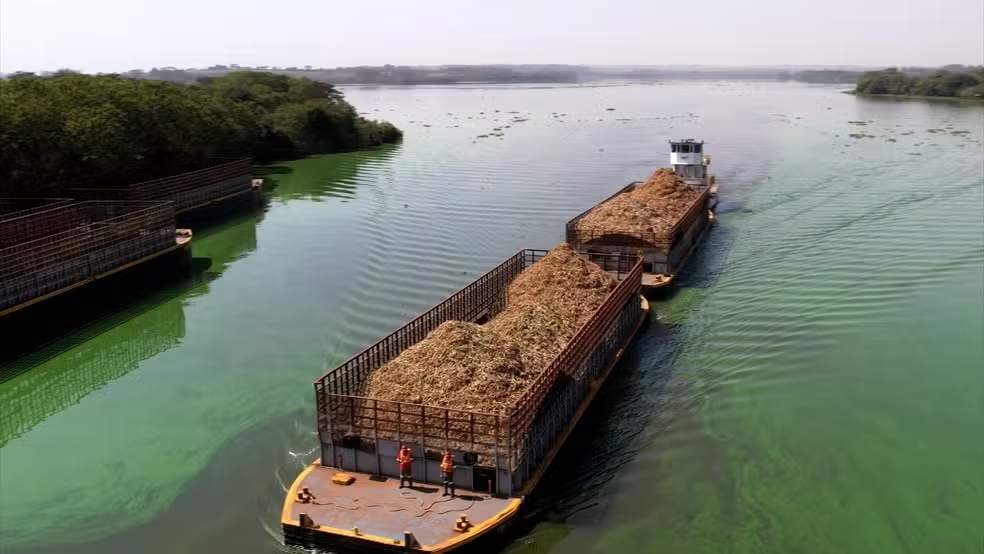Although they are not a well-known transportation system like highways, waterways are very important and are mainly used when transporting large volumes of cargo.
Cargo transportation via the Tietê and Paraná rivers has been increasing. The waterway is strategic for transporting part of the crops from the country’s central-west region and from São Paulo. Currently, this is one of the most important logistics hubs in Brazil.
For a family from Iacanga (SP), the harvest lasts six months. Machines and trucks come and go without stopping until the harvest is over. Brothers Matheus and Henrique produce sugarcane on 1,500 hectares. Everything is mechanized, and the production is taken directly to a port located 10 km away.
It is via the waterway that the sugarcane reaches the plant, which is located in Jaú (SP), and transportation via the Tietê River means cost savings. The port operates 24 hours a day, every day of the week. The trip takes about 8 hours.
The plant itself manages the structure and the boats. On a conveyor belt, the sugarcane leaves the truck and heads to the river. Each convoy is made up of three barges and, in total, it is possible to transport up to 1,500 tons.
The Tietê-Paraná waterway is one of the most important means of transport for agribusiness. It is where a large part of the production is transported. Producers from São Paulo and other states, such as those in the Center-West of Brazil, benefit.
A survey by the Secretariat of Environment, Infrastructure and Logistics (Semil) of SP showed that, in the first half of this year, the amount of cargo transported by the river increased by 5.8% compared to the same period last year. In the São Paulo stretch, the barges carried mainly soybeans (786,927 tons) and sugarcane (186,327 tons).
Waterways may not be as well-known a transportation system as highways, for example, but they are very important and widely used, especially when considering a large volume of cargo transported.
Waterways can transport tons of soybeans, corn and sugarcane, using a much smaller amount of fuel. This has an impact on the environment, and it is precisely this issue of sustainability that makes waterways one of the most advantageous systems in the world.
The systems are not “rivals” of each other, they complement each other. This is called “intermodal transportation”. A grain transportation and storage company uses this method: the cargo leaves Goiás (GO) and goes to Pederneiras (SP) via the waterway. It is also transferred to the railway line, bound for Santos (SP).
However, not all producers near the river prefer the waterway. Edgard Podoni, for example, also plants sugarcane. In part of his area, in Pederneiras, there are 40 hectares and, until last year, 80% of all production went to the plant via the river, but now he has made another choice: to prioritize transportation via highways, and the travel time was the main reason.

